Several years ago I watched Annabel Langbein’s The Free Range cooking shows and was very taken with the amazing New Zealand landscape where they was filmed, her mouth watering recipes and especially how she was able to cook with vegetables she had just freshly picked from her garden. Some time after that I watched Hugh Wittingstall’s River Cottage cooking show with the same enthusiasm. I found the whole idea of growing your own food, eating according to the season, fresh organic food and being at least partly self sufficient very appealing.
Finally, last October, I had some space to start planting some vegetables. Being a complete novice at gardening I really didn’t know what was in store for me. Kendall rigged up 3 beds measuring 2m x 1m each. We ordered some soil to put in them. I read about organic gardening, crop rotation, companion planting, composting, ordered my seeds, bought some seedlings, borrowed some tools and dug in.
I planted, labelled, mulched, watered and waited. Things just started to go wrong very soon after. My seedlings got riddled with holes. Originally healthy seedlings from the nursery started to have their leaves turn yellow, turn spotty, the strawberries leaves turned red. The plants just refused to grow however much love I gave them.
I started reading about diseases, pests, reading the signs on leaves, identifying pests and experimenting with organic methods of remedies. And boy, did I experiment with remedies! Most things didn’t work but some had marginal success. They were:
- sticking twigs in the plots to deter birds – the first thing that I discovered upon planting my seedlings and mulching was the birds were attracted to the mulch. They came roosting and were trampling on my seedlings. This remedy was a bit unsightly and I kept getting questions if the dried twigs were plants that had died but it worked quite nicely. The twigs took away the places that the birds would have landed and no more birds on the veggie patch.
- sticking whole carrots into the ground to attract some seedling-eating pest (don’t remember which) – didn’t seem to work. The seedlings continued to be eaten.
- spraying the foliage with a jet of water to repel sap-sucking insects – they fly off or drop away but just come right back after.
- lay reflective foils to confuse whiteflies – don’t think they were confused. There seemed just as many around.
- spraying organic neem oil solution as a systemic insecticide, the insects apparently will forget to feed – I did not notice any reduction in the population of the sap-sucking insects.
- spraying leaves with organic milk solution as a fungicide for powdery mildew – can’t say this doesn’t work because I don’t think the plant had powdery mildew.
- play pest detective in the night – I went scouting for pests in the night and yes I found a few slugs.
- more water or less water – it didn’t seem to be the problem.
- planting things in pots with potting mix – now this did yield some very important results. I experimented with cucumbers. The two seedlings I planted in a pot outperformed the ones in the plot by about 3 times. The leaves were at least 3 times bigger and they were about 3 times taller. The ones in the plot are still catching up.
- feeding the plants – I hit jackpot when I started feeding the plants with liquid fertiliser. They seemed to perk up slightly. Instead of more yellowing leaves each day the feeding somewhat arrested the spread. Having discovered this I started feeding with stronger fertiliser and many of the plants started showing signs of improvement!
- self pollinating – brushing the stamen and stigma seems to have had some effects. The aubergines are fruiting.
3 months into it, in spring and summer, my harvest so far includes:
- 6 strawberries – this was from an old plant in a pot that I had before starting the vegetable beds. After losing a few to birds I made up a flimsy barrier with cling film and I managed to harvest 6 strawberries.
- 1 cherry tomato – yes one! This I believe was the fruit that the plant had made when it thought it was dying. But I got to eat half the tomato, shared half with Kendall.
- about a handful of bok choy and chinese broccoli – they just weren’t growing and were starting to bolt. So I harvested them even though they were only about 3 inches tall.
- about a dozen spinach leaves
- enough baby lettuce leaves for one salad.
- just enough Thai basil leaves to make one Thai beef stir fry with vegetables.
So, as you can see, the pickings have been very thin but the vegetable garden is showing signs of improvements and I am looking forward to some of these.
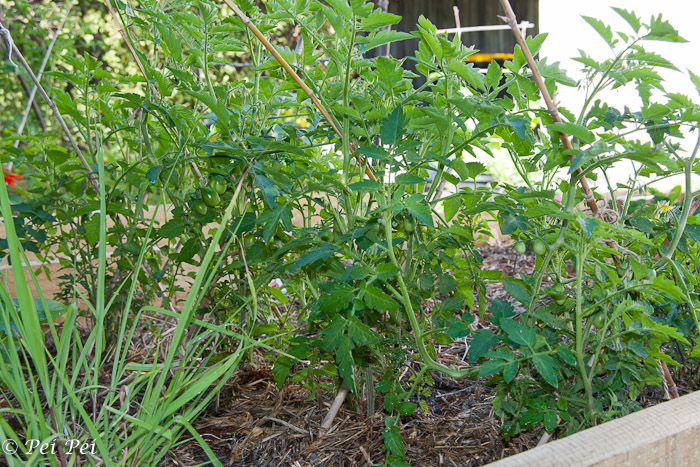
if you look closely you can see the clusters of tomatoes and flowers. in the foreground is not weed but lemon grass
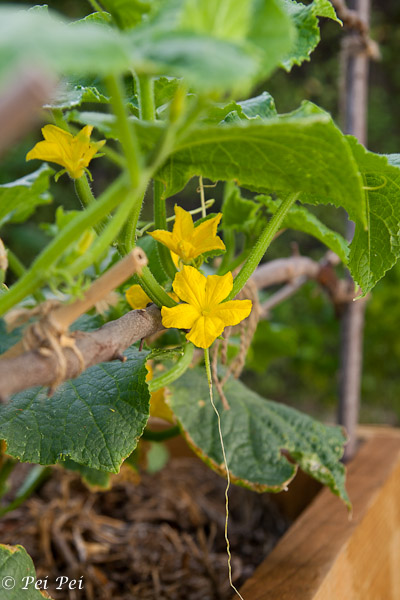
a closer look a the cucumber flowers. these ones are looking like male flowers. female ones have little cucumbers at the base.
There are some important things that I have learnt. They seem so rudimentary but I didn’t know any better. I now know to:
- put in the stakes at the time of planting or very soon after otherwise you risk damaging the roots.
- read labels about how much space each plant takes and allocate enough space for them.
- plant low watering plants away from high watering plants.
- check the weather report before feeding and never feed when the weather is going to be hot. I just burnt some leaves today because I fed them with liquid seaweed fertiliser and it turned out to be 35C.
I have still got some things I am experimenting with. My fingers are crossed that they will work. I am hoping that I can:
- attract good insects – there are virtually no good insects in my backyard. I planted some flowers in the vegetable beds in hope of attracting them so that that they will control the pest problem and pollinate my flowers. So far, I have seen ONE bee. I have also started a flower bed nearby with the same motive.
- have my hot weather plants live over winter by having them in pots so that I can give them some shelter when it gets cold. I have curry leaves and several chillies in pots. I will move my lemon grass into a pot when the weather cools.
This far growing your own vegetables has not been as easy as the gardening shows make it out to be. It has been really frustrating when the plants are dying or suffering and I am at a loss as to what to do. I am spending way more than the two hours per week that one show had suggested for a plot about 3 times the size of mine. However, I am thrilled when each day I see that the veggies have grown just a little bit more.
Hopefully I can reap the fruits of my labour soon and perhaps then it would all be worth it. One thing that surprised me was how excited I was to see earthworms in my plot! Hah, I didn’t think I would live to say that. I wonder what else the vegetable plot has in store for me.
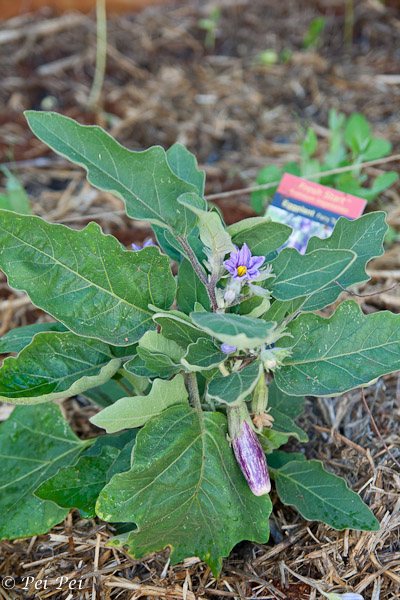
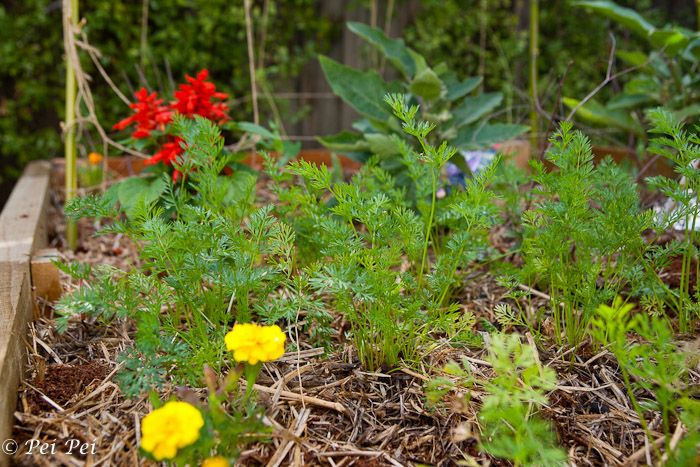
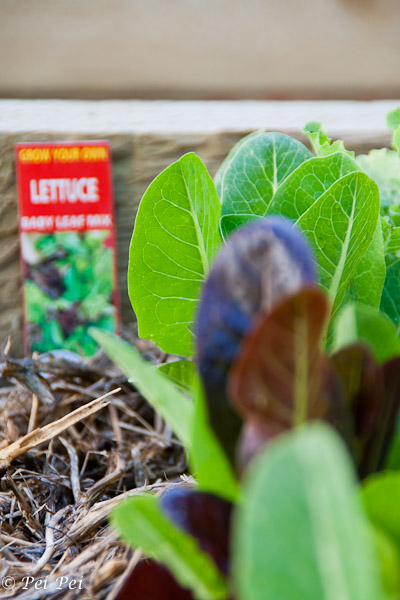
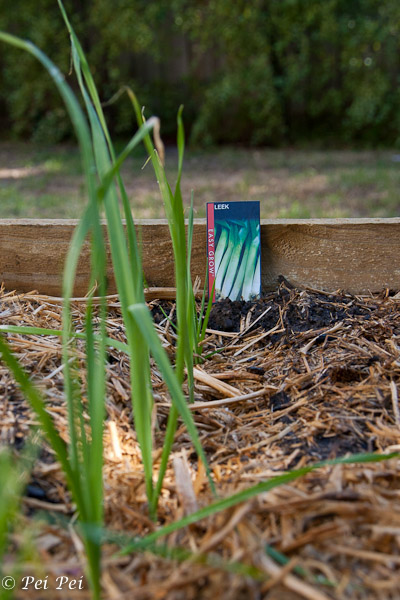

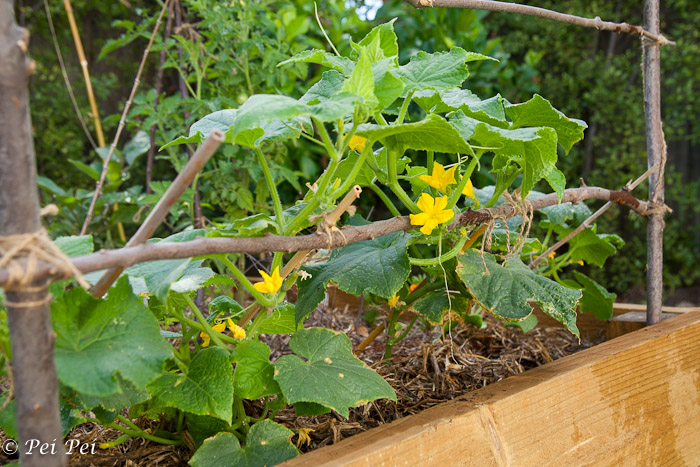
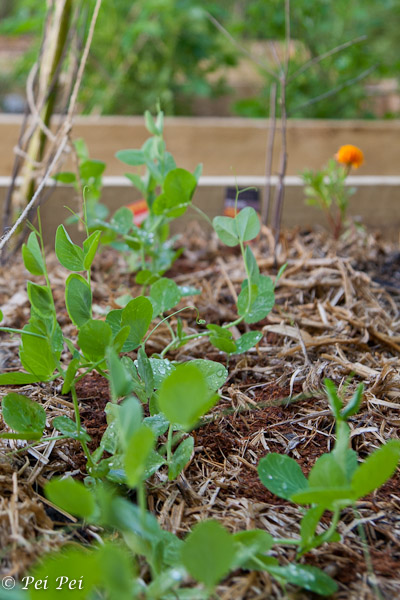
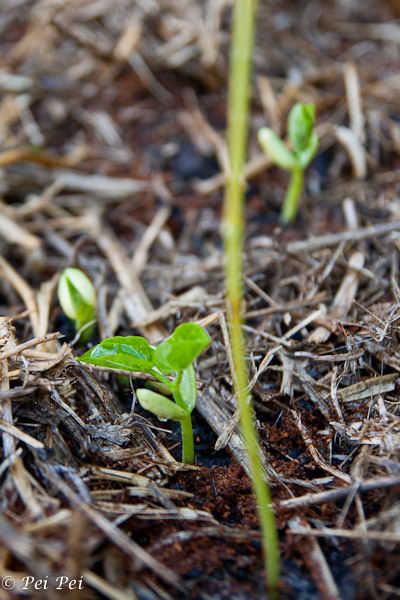
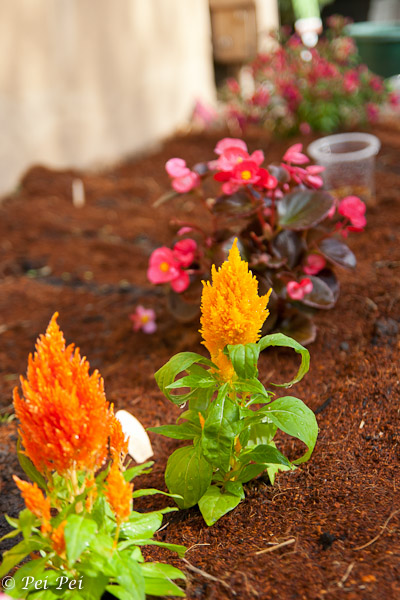
How come my part of the gardening is all digging and moving dirt and rocks and your part is all enjoying the plants and flower growing and taking photos?
Great work!! You want to come take care of my veggies too? You are a real gardener now.